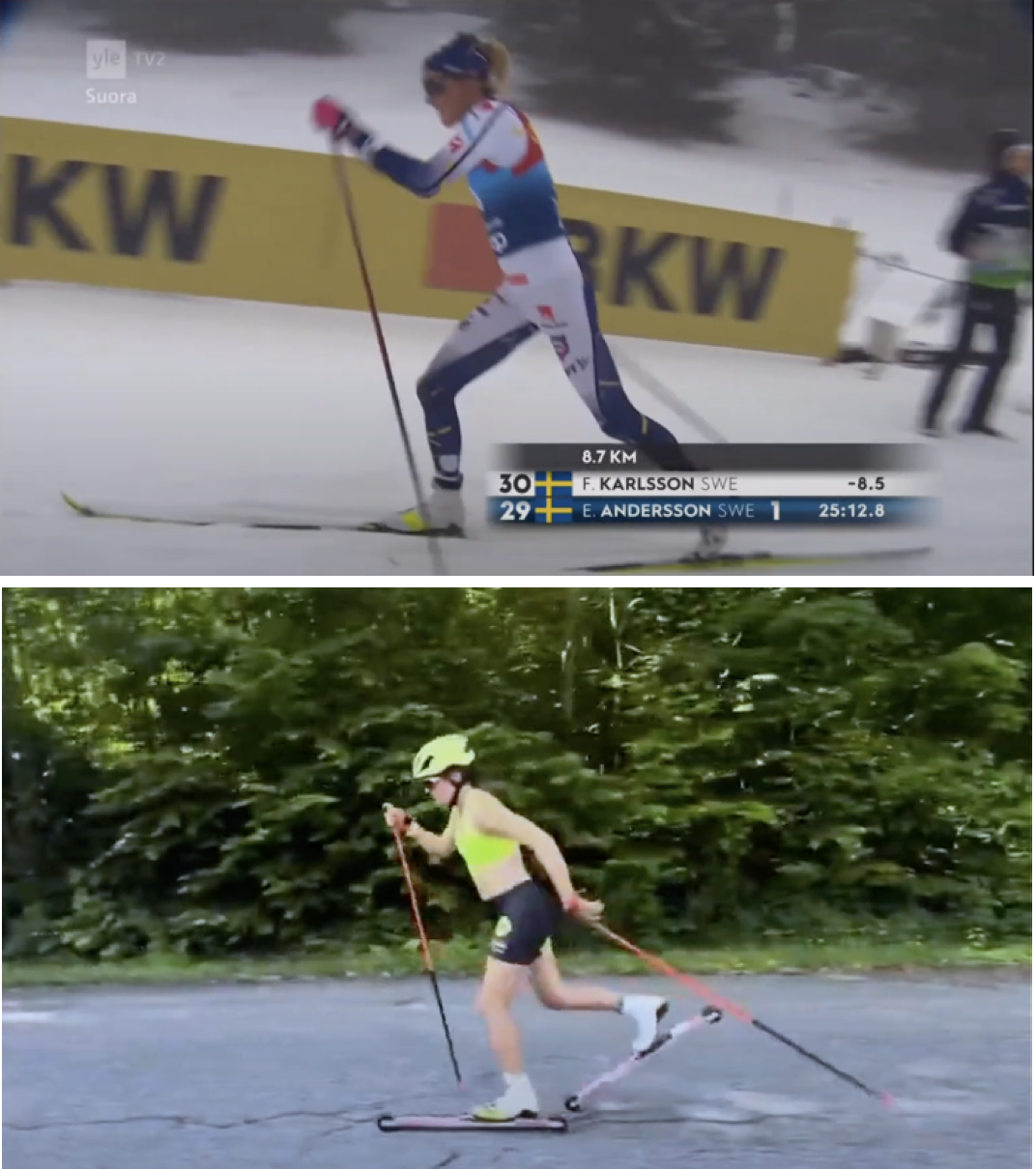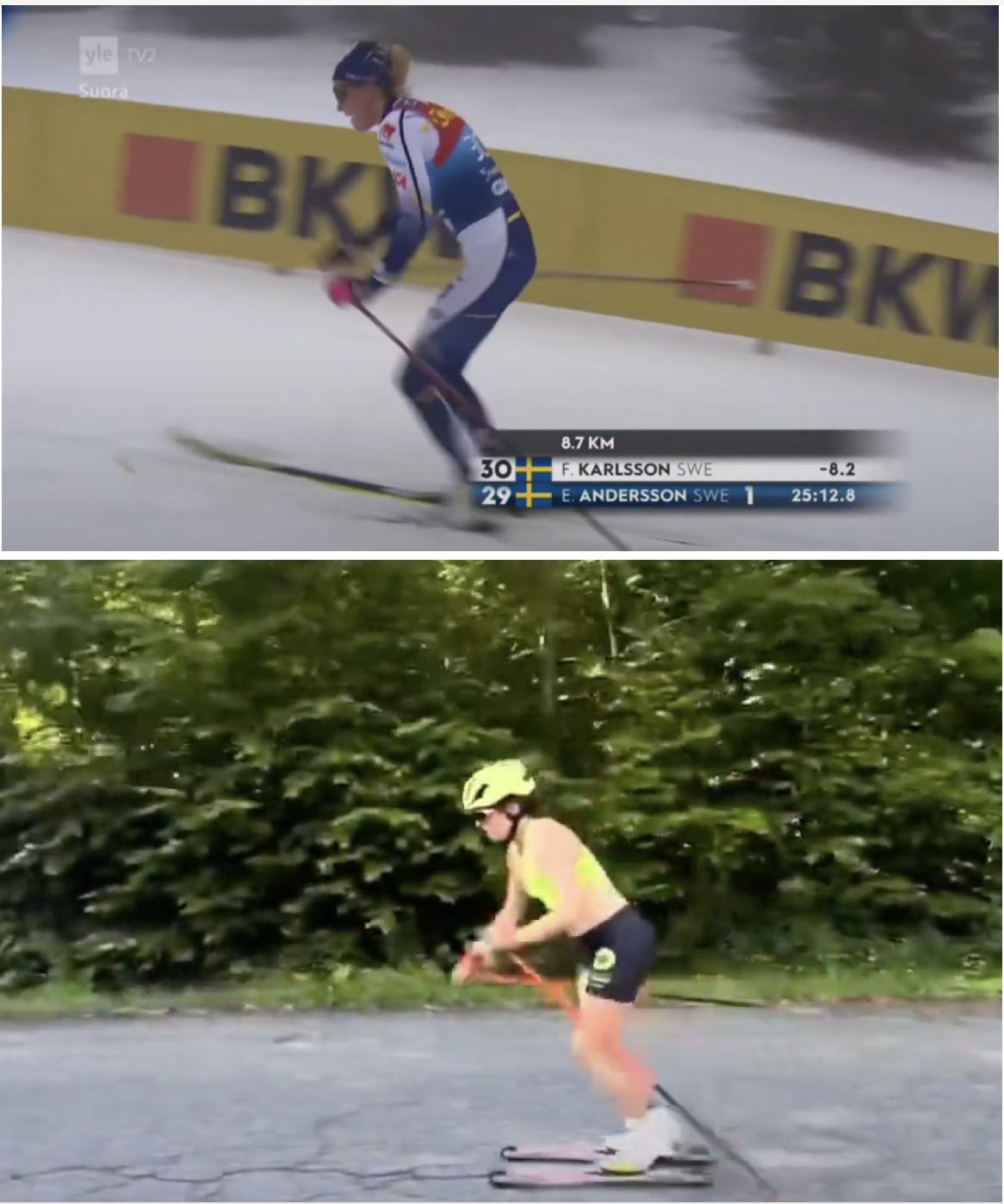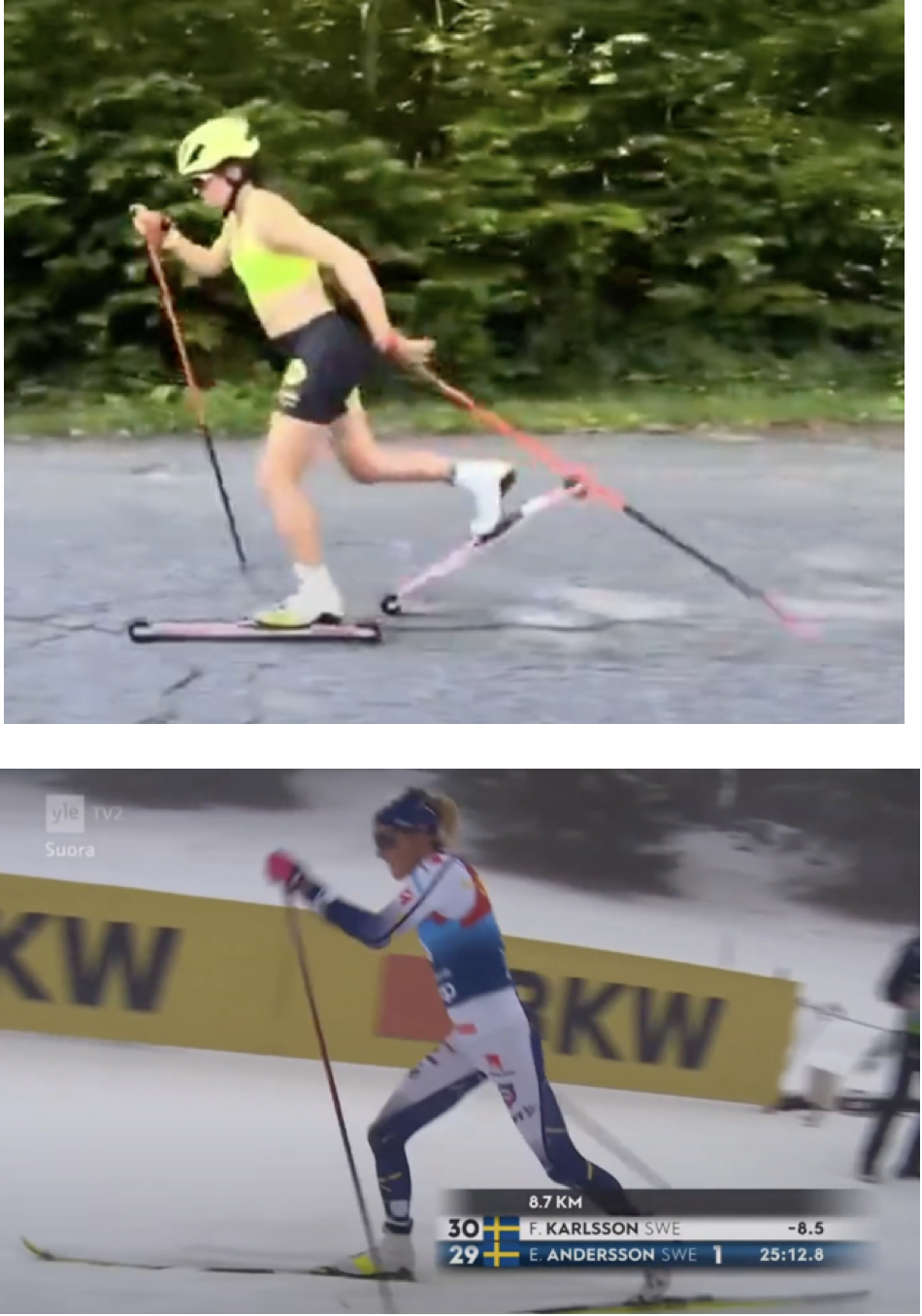Posted by Annie McColgan - Mansfield Pro on Jun 26th 2025
Technique Analysis W. Annie
It’s no secret that the best athletes utilize video for the process of visualization and analysis. Game video or race video, is the best way that we can get out of our own perspective and take a good look at what it is we are *actually* doing with our bodies. The gap between we think we are doing with our bodies and what we are really doing is an awkward one. For people with a good sense of agility and body control, this gap is smaller. However, it is a highly coachable gap through the process of video analysis.
A few years ago, I wrote an article called “Why We Should Watch World Cup” and I think this article acts a bit in conjunction with that one. We absolutely should watch world cup, and we should absolutely watch ourselves as well. Even better, watch them together. My coach in high school Dan Simoneau, used to align a world cup skier video such as the striding of Ingvild Flugstad Østberg winning a world cup with 13-year-old Annie’s striding up the hills of Mt. Bachelor and put it up on the TV in our old office at MBSEF. The difference to say the least was startling.
However, what it taught me to do was look at myself with an outside perspective while I was skiing. A lot of people think that the main reason that ski coaches focus on agility so much when kids are learning to ski is that it will help them out of those ski snapping crashes that juniors are so often getting into (guilty). But mainly through agility, we form better mental-body connections that we can apply to easy technique changes.
I do think there is a balance though. One summer, I didn’t look at any video of myself at all. I had been overthinking my technique a lot the winter prior, and I decided to let my body find its natural skiing state. Once I had established how my body wanted to naturally ski (which is not always the most efficient), I was able to come back in the fall and see what places really needed adjusting. Often we do our technique during interval sessions. However also establishing what kind of technique our bodies what to automatically revert to during our easy pace, will help us know what to do to keep us out of trouble when the hill gets big and the lactate gets high. This means, having a friend grabbing some video of yourself easy striding by can be super valuable for improvement.
A lot of skiers, me included, have a coach to help them figure out what’s going right or wrong on the skis. However, I think that we are our own best coaches. Not to mention, the handy dandy internet gives us access to a vast archive of world class striding gliding and skating for us to take a look at. What I will show here is a process by which you can basically play “spot the difference” between a video of yourself, and a world cup skier so that you can easily spot what places of your technique need help, while not becoming too overwhelmed.
For this example, I’m going to use a video of myself in a classic threshold session from last week, side by side with a video of Frida Karlson striding. I’m going to work on three areas that I’ve been working on for years: my head, hands and hips. Another reason to focus on these three areas is because they are great queue areas. Sometimes trying to fix an area such as the core, hips or shoulders can feel slightly overwhelming, so focusing on small areas like these can help us make adjustments every day. All you really need is a couple seconds of each, and you’ll be able to identify some great work areas. Obviously, the terrain and the mediums are different between the snow and roller skiing, however it is important to know how it is I can improve my summer skiing so that the winter goes smoothly.
Here is the clip of me I’ll be working with:
I start striding at 10 seconds.
And here is the clip of Frida Karlson I’ll be working with:
Frida Kareleson starts at 3:50 (thanks Brandon Herhusky).
https://www.youtube.com/watch?v=DpvG3OiQ8Sc
- Take a look at the head:

This side by side process is best done shot for shot. The best way would be to open two tabs with the videos side by side to watch, however, these screen grabs can illuminate for me some of the work I need to do. Starting from the top down, with the head.
In the past, I’ve really struggled with keeping my head and neck relaxed when I ski. Typically, I’ll look way to high up the hill, and it ends up straining my back, and pushing my butt out the back, leading to a slip. However, if you look too far down, it can cause the shoulders to collapse leading to tightness in the chest. We need our chests to be as relaxed as possible while skiing as to give our lungs the best chance and getting the air we need in.
The trick is the keep your head nice and relaxed and oriented into the hill as to keep your chest up, looking forward here like Karlson. I’ve certainly gotten better at it, but you can see here that Karlson is able to keep her eyes further up the trail because her chest is adjusting to the terrain staying tall. Her chest his high, her eyes are high, and her neck isn’t strained.
- Take a look at the hands:

Next up, hands. Karlson is driving her hands forward down the trail opening her lats up to engage with the hill. Looks like I’m going to have to hit the gym a bit more to keep my lats engaged all the way through the push, and that includes setting the pole. My other hand, in this stride is back behind my butt, which in some cases is alright for a longer stride, however here Karlson is showing that fast hands come from a quick bounce back. Her hands never fall past her waist when she is using this high tempo. This is something that is great to practice, even when the terrain doesn’t call for it just to practice that kind of rhythm.
- Take a look at the feet:

In classic skiing, where you set your feet is probably one of the most important and crucial pieces as it defines how your wax is going to get set. Karlson shows that driving the foot forward, even past the body especially on a steep hill, sets yourself up not to have a late kick. It is especially important to work on this in the summer particularly since we work with perfect kick all summer and don’t have any real indicator of how you are “setting your wax.”
However, for my feet, the biggest issue is my kick back.

Perhaps it is a symptom of my tight hamstrings, or a habit I picked up young and haven’t let go of, but I tend to cycle my heel up even when I’m easy string. You see Karlson here, keeps her hamstring relaxed and finishes her kick all the way through using every last bit of kick she’s got.
What to work on?
From these two quick ten second videos, I’ve now been able to find on three great work areas: orienting my head and chest up the hill, setting my poles further forward engaging my lat, and letting my foot in the back remain relaxed kicking all the way through. I can now engage with, one, or all of these queues when I train, and have an image that I can attempt to replicate in my training.
I hope you found this process helpful and useful. Brandon Herhusky’s YouTube channel is a great place to look for more visualization clips for which you can compare yourself with. Happy training!

